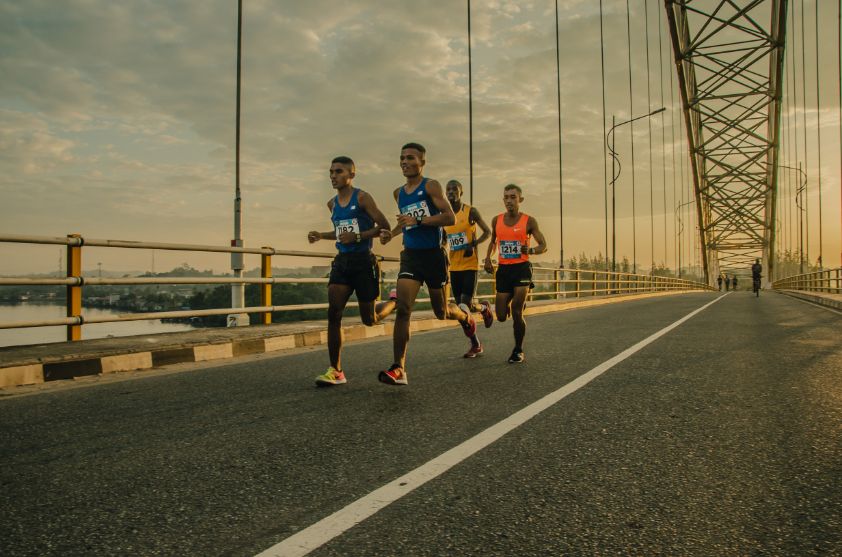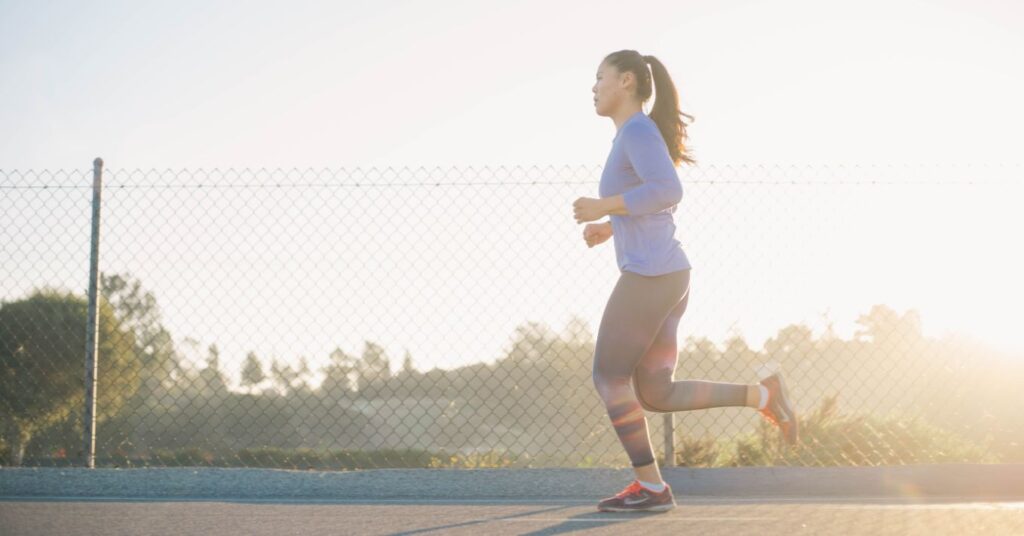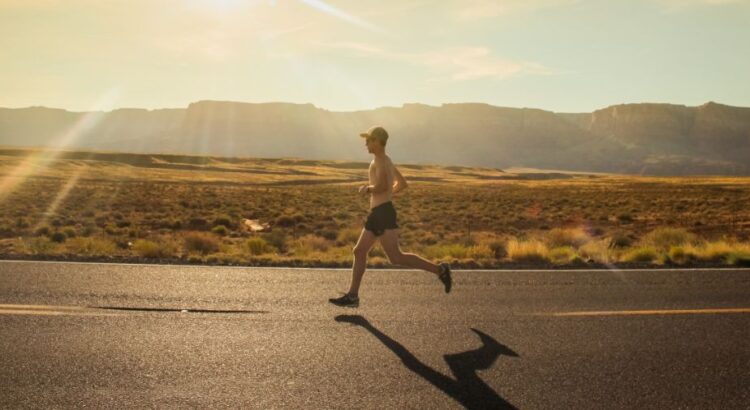Do you want to know if running adds muscle or makes your legs bigger? You’re at the right location! According to the intensity and length of your run, running can, in general, increase muscle mass and make your legs appear bigger.
However, the effects of running vary from person to person. While some people may notice a size increase in their legs after running, others might not notice anything at all. Running frequency, run intensity, and genetics are just a few of the variables that can affect whether or not it increases the size of your legs.
So, if you don’t want your legs to get bigger, keep reading to learn what causes it and how to stop it.
Does Running Make Legs Bigger?
Everything depends on your eating habits, running style, and other activities. Running tends to slim down rather than bulk up your legs. This is what running does, it replaces your fat with muscle.
Exercise like running helps burn fat. By burning fat, you create space for your muscles. While the fat you burned has made your legs bigger, your legs will also become stronger and more muscular as a result. Your legs will typically look slimmer after a run.
You can alternate between sprinting and brisk jogging by using interval training. Exercise methods called “interval training” involve short bursts of high intensity with periods of lower effort. Interval training burns more calories than continuous exercise, according to the British Journal of Sports Medicine. You can burn more calories for several hours after your workout by using interval training.
If you run properly, you’ll see a difference in your calf muscles. If you run at a moderate intensity, your calves, quads, hamstrings, and glutes will develop more quickly.
Yoga can also aid in weight loss, body toning, and increased flexibility. Depending on how many calories are consumed, your legs may become slimmer. Running may help you lose body fat, giving you slimmer thighs and legs. Due to the increased calorie burn from running, your legs will probably look more defined. You may be interested in Yoga Before Or After Running: After Is Better
Why Are Some Runners’ Legs Skinny?
Leg size can be influenced by the kind of training a runner does. Due to the lack of benefits for muscle growth, long-distance runners typically have smaller muscles than sprinters.
In a similar vein, diet can also affect leg size. It will be impossible to develop muscular legs if you don’t consume enough calories.
Last but not least, genetics is the main cause of skinny legs. Some individuals’ lower bodies naturally store less fat, giving them slimmer legs.
Factors That Affect Your Legs
Genetics

- The size and shape of your legs may also depend on your genetic makeup.
- You can decide in advance whether you’ll develop muscle mass more quickly than others.
- Running will only make you fatter and worse.
- Despite their best efforts, people with a stocky build will not suddenly develop long legs and become marathon runners.
- If you have risky genes, you might want to think about playing another sport.
- Swimming, for instance, is a great cardio exercise that isn’t as taxing as running.
- The size and shape of your legs are largely determined by your genetic makeup.
- Running can speed up the process of muscle growth.
Your Running Time And Distance
The length of the run should also be taken into account. If you run for more than two hours or more than eight miles in one session, you are more likely to break muscle tissue and make it appear larger. Your muscles may develop quickly as a result of overtraining, and your legs may appear bulky.
A gradual overload of muscles and slow growth can result from running quickly. However, this does not imply that you should always run the same distance. Additionally, it might be harmful to do this. You will require more exercise to burn fat calories because you will be more fit. Time is also crucial because your body won’t start burning fat until it has used up all of its glycogen, which can take up to 30 minutes.
As your physical fitness improves, it will take you less time to travel the same distance. As a result, you will spend less time in the aerobic fat-burning zone, which will prevent rather than facilitate fat loss.
It’s crucial to avoid overextending yourself and instead concentrate on making your running sessions as effective as possible while spending as much time as possible in the aerobic zone. A high aerobic state can result from running too quickly. The risk of losing muscle growth and overload increases as the mileage increases.
The Intensity Of Training
Your training sessions’ effects on your body will depend on how hard you run. The real issue is whether you’re activating fast- or slow-twitch muscles. If distance running is your preferred option, start out slowly and increase your mileage over time.
Start off with two miles and gradually increase that distance each week, for instance. You will have a greater chance of slimming your legs if you do this. Sprint exercises are more demanding and should be avoided if you don’t want to bulk up your legs.
You can add a workout to your training if you don’t mind having bigger legs but still want to strengthen them. As you get stronger, you can add more. For starters, four sprints per session (up to 100 m) will be sufficient. Start slowly; don’t push yourself too hard. Make sure you get enough rest in between sprints and keep your first sessions moderate.
The Diet And The Effect Of Running On Your Appetite
As sure as the sun will shine, running will make you hungry. However, you should avoid a common error of consuming carbohydrates before or after your workout. Despite what you may believe, especially if you are trying to lose weight, you do not necessarily need extra energy to finish the strenuous running session.
The problem is that by consuming too many carbohydrates, your body will have to expend energy to burn them off before it can begin to burn fat.
Your body will burn stored fat as fuel if you don’t consume any carbohydrates before running, which will speed up your weight loss. This also translates to leaner legs!

Another reason why carbohydrates are bad for weight loss is that they make you hungrier and almost addictive. Your cravings for them increase as your insulin levels rise the more you eat of them.
We all know that the thighs are one of the most important zones of a woman’s body, and if you consume more calories than you actually expend each day, you will exceed your daily caloric energy expenditure and gain weight rather than lose it.
You do need to eat more calories if you want to put on muscle and enlarge your legs, but you should make sure that they come from protein-rich foods since this will hasten the process of muscle growth.
What Effect Does Running Have On Leg Tone?
Your lower body muscles can grow stronger with running. But it all depends on how hard and long your runs are. High-intensity interval training (HIIT) was carried out by 12 college students with recreational training. This involved four sets of running for four minutes at or close to one’s maximum capacity, followed by three minutes of active rest. Long-distance running can slow down muscle growth and increase protein loss in the muscles.
The muscle damage markers increased significantly in each group of 30 amateur male runners who ran 6.2 to 13 miles (10, 21, or 42 km) in the study. These studies demonstrate how strengthening leg muscles during short, high-intensity runs. Running for extended periods of time can seriously harm your muscles and stop them from growing.
After ten weeks of three-times-per-week HIIT exercise, the students’ quadriceps muscle fibers increased by 11% in comparison to the control group. Lifting weights is a great alternative to running if you want to tone your legs.
What Causes My Legs To Appear Larger After Running?
Due to the increased blood flow to your muscles after running, your legs may appear larger. When you run, your heartbeat quickens and more blood is pumped through your body, particularly to your legs.
Your leg muscles may momentarily swell and appear more pronounced than usual as a result of the increased blood flow.
Conclusion
Running is a fantastic way to lose any extra weight you may be struggling with while also enhancing your cardiovascular health. Unfortunately, not everyone’s response to running will be the same. As you can see by now, a number of factors, including the type of running we select, our innate propensity to gain muscle, how and what we eat, and how intensely we train, will affect the outcome.
The overall health and fitness benefits of running are numerous. Various running techniques can develop different levels of leg strength and muscle. Focusing on gradually raising your running intensity over time while avoiding longer distances will increase your likelihood of developing leg muscle.
